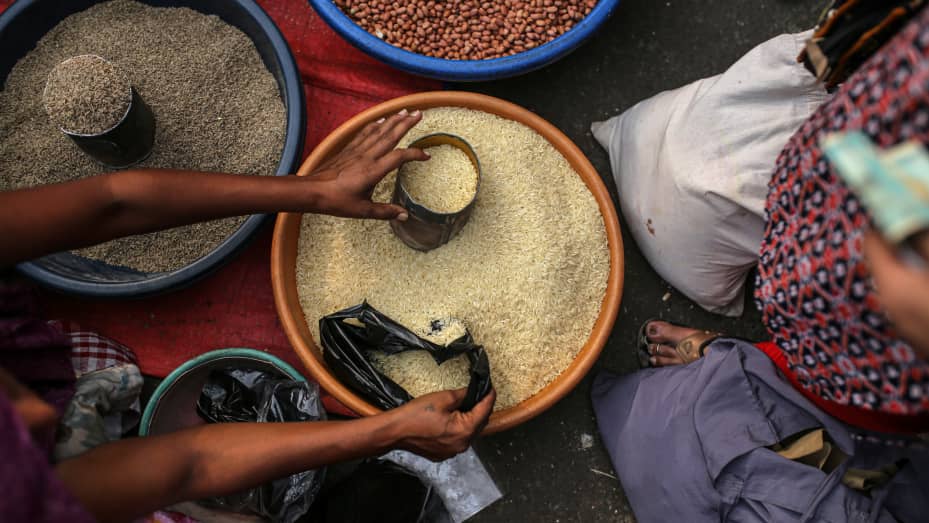India banned the exports of non-basmati white rice with immediate effect late Thursday, the latest in the government’s effort to rein in high food prices.
The Ministry of Consumer Affairs said the ban would help ensure “adequate availability” of non-basmati white rice in India, as well as “allay the rise in prices in the domestic market.”
India is the world’s leading rice exporter, accounting for more than 40% of the global rice trade, as well as the second-largest producer after China.
Analysts told CNBC this week’s ban could send already elevated prices shooting even higher, compounding effects from the country’s September ban on shipments of broken rice.
“Global rice [supplies] would drastically tighten … since the country is the world’s second top producer of the food staple,” said Eve Barre, ASEAN economist at trade credit insurer Coface.
Barre said Bangladesh and Nepal would be hardest hit by the ban, as both countries are top export destinations.
In addition to a reduction in global rice supply, panic reactions and speculation on global rice markets would exacerbate the increase in prices.
Eve Barre
ASEAN ECONOMIST AT COFACE
The ban could also exacerbate food insecurity for countries heavily reliant on rice, agriculture analytics firm Gro Intelligence predicted in a recent report published before the announcement.
“Top destinations for Indian rice include Bangladesh, China, Benin, and Nepal. Other African countries also import a large amount of Indian rice,” Gro Intelligence’s analysts wrote.
According to the Ministry of Consumer Affairs, non-basmati white rice constitutes about 25% of India’s rice exports.
Affected importers may turn to alternative suppliers in the region, like Thailand and Vietnam, DBS Bank senior economist Radhika Rao said.
Price of rice to go higher?
“In addition to a reduction in global rice supply, panic reactions and speculation on global rice markets would exacerbate the increase in prices,” said Coface’s Barre.
Prices are already hovering at decade highs, in part due to tighter supplies when the staple became an attractive alternative as prices of other major grains surged following Russia’s invasion of Ukraine in February 2022.
Wheat prices jumped this week after Russia withdrew from the Black Sea grain deal. The agreement had sought to prevent a global food crisis by allowing Ukraine to continue to export.

Roadside vendor selling rice in Mumbai, India, on Saturday, Jan. 7, 2023.
Bloomberg | Getty Images
“Rice inflation has already accelerated from an average 6% year-on-year last year to nearly 12% in June 2023,” DBS’ Rao said.
Rough rice futures rose 1% higher to stand at $15.8 per hundredweight (ctw) following India’s announcement.
The South Asian nation is wrestling with high vegetable, fruit and grain prices. Prices of tomatoes in India have surged more than 300% in recent weeks due to adverse weather. A Reuters poll predicted the country’s inflation likely hit 4.58% year-on-year on soaring food prices.
Rabobank senior analyst Oscar Tjakra predicted global rice prices will rise further due to India’s share of the global market. Tjakra predicted prices could even surpass second-quarter highs when rough rice hit $18-levels per cwt.
Source : CNBC


